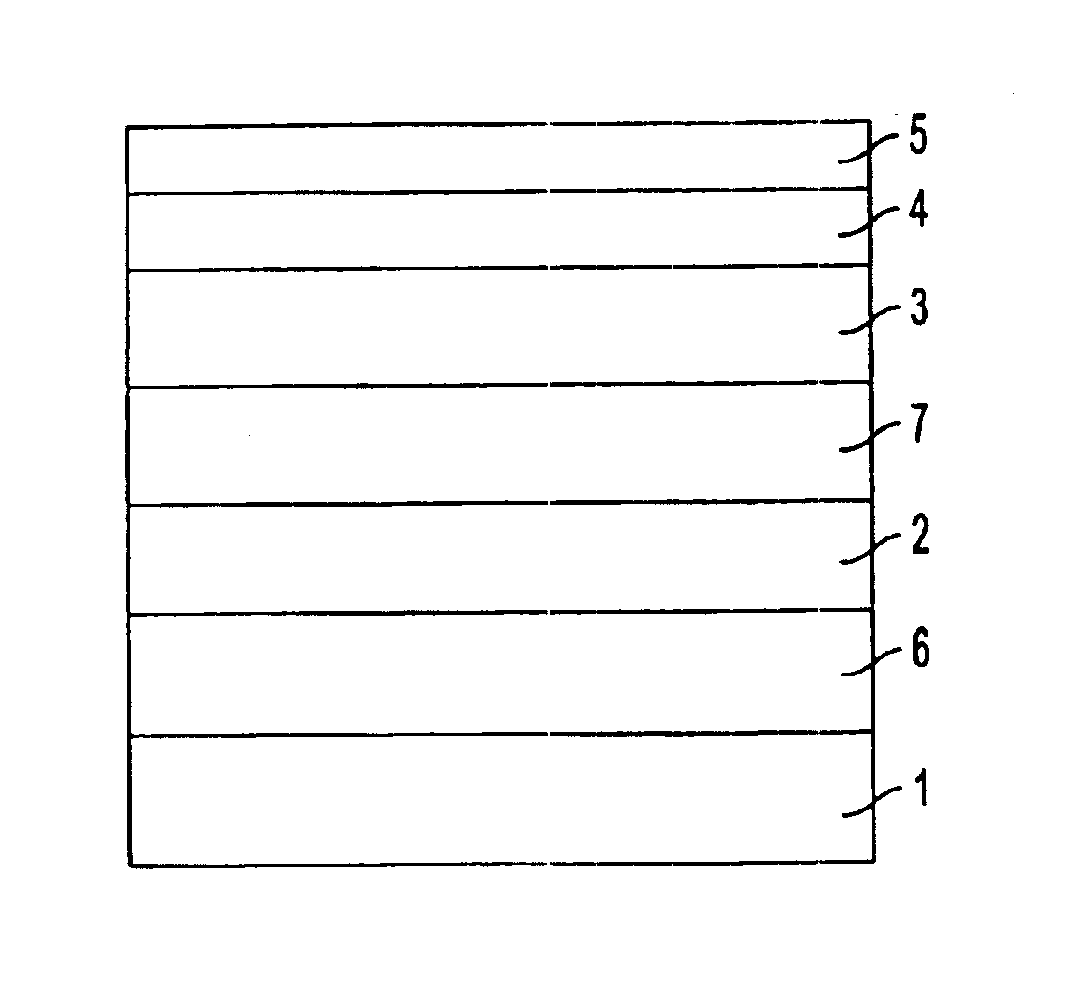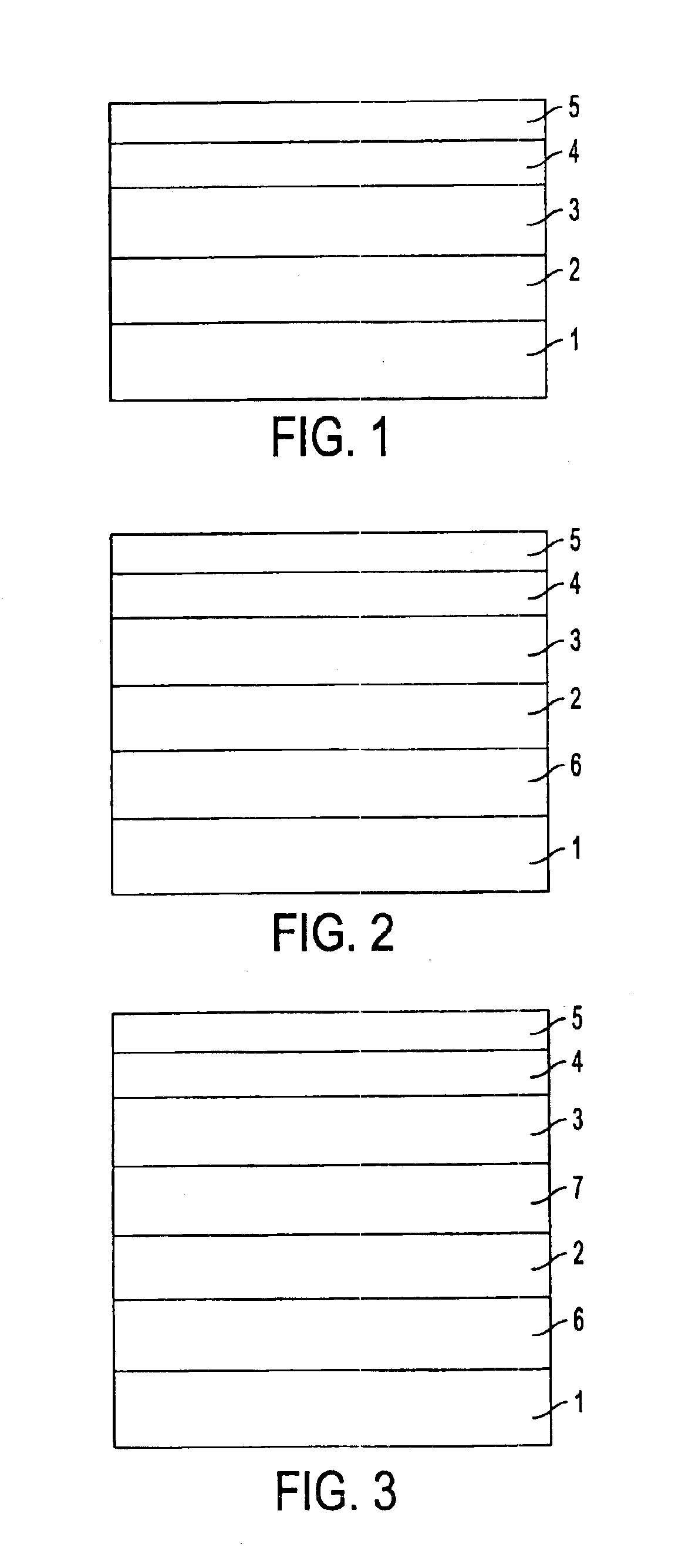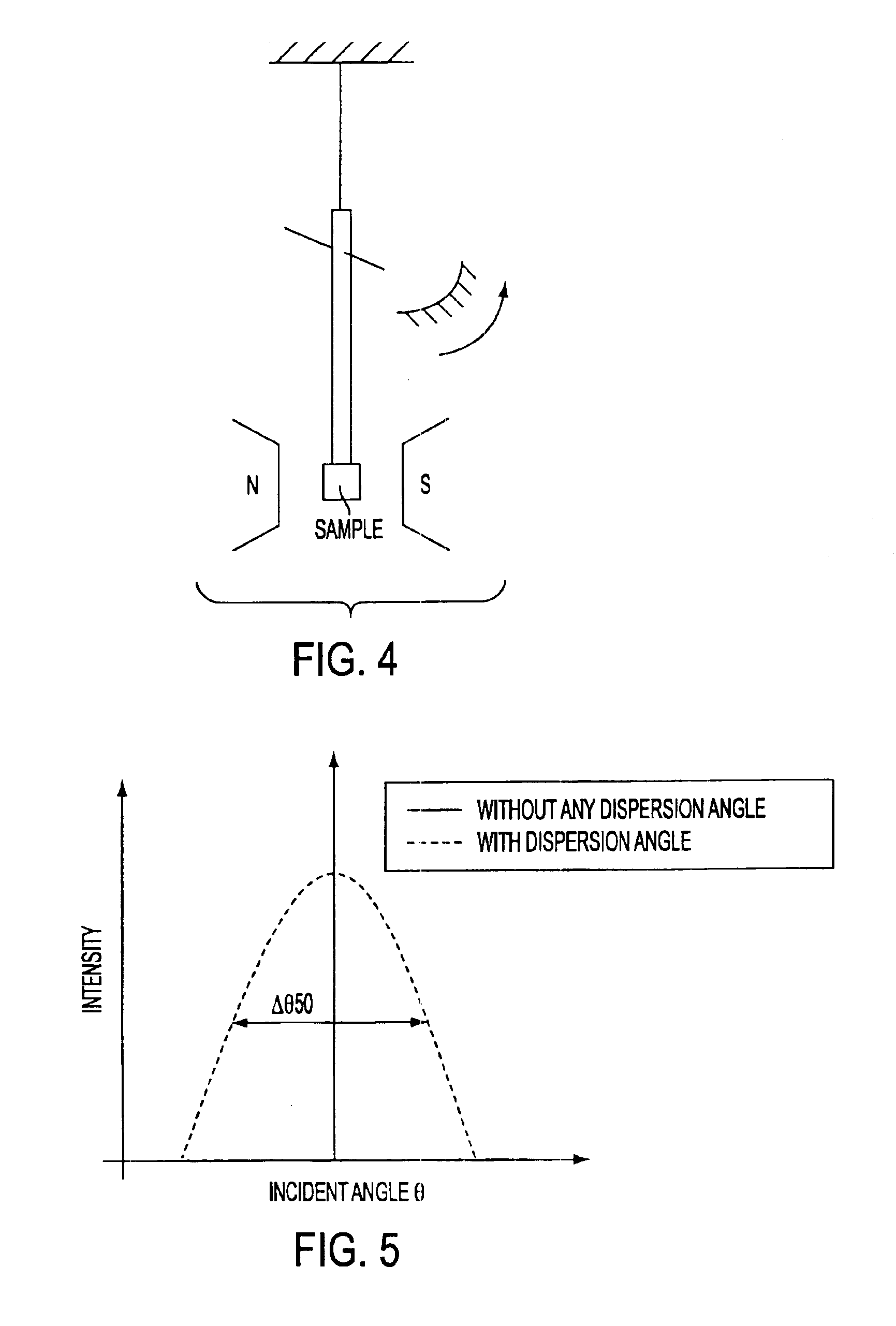Perpendicular magnetic recording medium
a magnetic recording medium and perpendicular technology, applied in the direction of magnetic bodies, instruments, transportation and packaging, etc., can solve the problems of inappropriate orientation of the initial growth layer and achieve the effect of improving the performance of the medium, reducing the amount of the initial growth layer, and improving the orientation of the magnetic recording layer
- Summary
- Abstract
- Description
- Claims
- Application Information
AI Technical Summary
Benefits of technology
Problems solved by technology
Method used
Image
Examples
example 1
Example 1 relates to the single-layer perpendicular magnetic recording medium including the non-magnetic substrate. The NiFeCr under layer, the magnetic recording layer, the protective layer, and the liquid lubrication layer are sequentially provided on the substrate. The single-layer perpendicular magnetic recording medium is produced in a following manner:
First, a chemically reinforced glass substrate (for example, an N-10 glass substrate manufactured by HOYA CORPORATION) has a smooth surface. The glass substrate is used as a non-magnetic substrate and is washed. The washed glass substrate is introduced into a sputter apparatus, and a NiFeCr under layer 5 nm in thickness is formed using a Ni15Fe25Cr target, a non-magnetic Ni-based alloy. Subsequently, the substrate is heated using a lamp heater so as to provide the NiFeCr under layer with a surface temperature of 300° C., and then, a CoCrPt magnetic recording layer 30 nm in thickness is formed using a Co20Cr10Pt target. Finally, a...
example 2
Example 2 relates to the single-layer perpendicular magnetic recording medium constructed similarly to that in Example 1, except that the seed layer is provided between the non-magnetic substrate and the NiFeCr under layer. That is, the single-layer perpendicular magnetic recording medium in this example includes the non-magnetic substrate. The seed layer, the NiFeCr under layer, the magnetic recording layer, the protective film, and the liquid lubrication layer, which are sequentially provided on the substrate. The single-layer perpendicular magnetic recording medium is produced in a following manner:
First, a chemically reinforced glass substrate (such as an N-10 glass substrate manufactured by HOYA CORPORATION) has a smooth surface. The chemically reinforced glass substrate is used as a non-magnetic substrate and is washed. The washed glass substrate is introduced into the sputter apparatus, and a Ta seed layer 5 nm in thickness is formed using a Ta target. After the seed layer ha...
example 3
Example 3 relates to a single-layer perpendicular magnetic recording medium constructed similarly to that of Example 2, except that an intermediate layer is provided between the NiFeCr under layer and the magnetic-recording-medium layer. That is, the single-layer perpendicular magnetic recording medium of this example includes a non-magnetic substrate. The seed layer, the under layer, the intermediate layer, the magnetic recording layer, the protective film, and the liquid lubrication layer are sequentially provided on the substrate. The single-layer perpendicular magnetic recording medium is produced in the following manner:
First, a Ta seed layer is formed on a glass substrate as a non-magnetic substrate, as in Example 2, and then a NiFeCr under layer is formed as in Example 1. Further, an Ru intermediate layer 5 nm in thickness is formed using an Ru target. Subsequently, a CoCrPt magnetic recording layer and a carbon protective film are sequentially formed in exactly the same mann...
PUM
| Property | Measurement | Unit |
|---|---|---|
| thickness | aaaaa | aaaaa |
| thickness | aaaaa | aaaaa |
| surface temperature | aaaaa | aaaaa |
Abstract
Description
Claims
Application Information
 Login to View More
Login to View More - R&D
- Intellectual Property
- Life Sciences
- Materials
- Tech Scout
- Unparalleled Data Quality
- Higher Quality Content
- 60% Fewer Hallucinations
Browse by: Latest US Patents, China's latest patents, Technical Efficacy Thesaurus, Application Domain, Technology Topic, Popular Technical Reports.
© 2025 PatSnap. All rights reserved.Legal|Privacy policy|Modern Slavery Act Transparency Statement|Sitemap|About US| Contact US: help@patsnap.com



